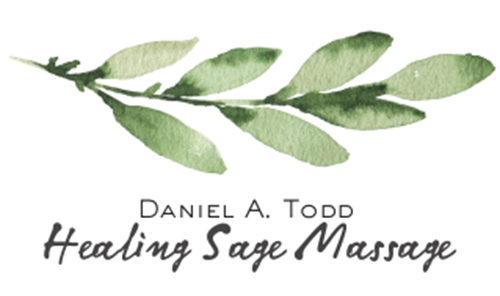About Us
Daniel Todd, LMT, is licensed in the state of Arizona. He originates from the great state of Kentucky. Daniel obtained his license at ASIS Massage Therapy school in Prescott, AZ. Where he resides with his wife, Breeanya, and dog, Jasper. Daniel specializes in sports massage, Craniosacral and Myofascial release.
FAQ
What should I wear for stretch or massage?
Most people find it comfortable to wear yoga or sweat pants for stretch therapy. Any garment should provide mobility and comfort for holds and poses. In massage, most people will leave lower undergarments on. The therapist will always have a sheet for draping so that any sensitive area will always be covered.
What is a Swedish Massage?
Traditional Swedish Massage uses five main strokes (Effleurage, Petrissage, Friction, Tapotement & Vibration) and many variations, to achieve its relaxing and healing effects. Many therapists use a variety of techniques. Swedish traditionally uses oil or lotion.
What is Deep Tissue Massage?
Deep Tissue Massage is a massage technique that focuses on the deeper layers of muscle tissue. It aims to release the chronic patterns of tension in the body through slow strokes and deep finger pressure on the contracted areas, either following or going across the fibers of the muscles, tendons, and fascia.
What is Myofascial Release?
Let’s break it down, Myo- means muscle. Fascial refers to the word Fascia which is the connective tissue of the body.
Release- means to be free of or to let go.
So Myofascial Release or MFR is a form of Bodywork / Healing Art that helps release the fascial restrictions/adhesions that hold us back or entrap us in pain. MFR helps to restore the body’s ability to move freely without pain.
What is Craniosacral Therapy?
Craniosacral Therapy is a hands-on touch therapy that facilitates your body to respond in a healing way to the specific hand placements of the therapist during the session. This therapy is ideally suited for healing trauma since all trauma is emotional, and craniosacral therapy produces what is called a somatic emotional release. The benefits are relieving tension in the central nervous system to promote a feeling of well-being by elimination pain and boosting health and immunity.
Are there any side effects from Craniosacral Therapy?
Usually, there are only pleasant sensations during the session and most often complete relaxation. After the session, there is Processing by the Central Nervous System, which can often take a few days and up to a week to complete. This is your body’s response to releasing trapped emotions, negative experiences, and trauma your body has been holding on to.
How often should you have Craniosacral Therapy?
Generally, most people come once per week. Some adults and small Children can be seen two or even three times per week.
I have ‘knots’ in my back, what exactly are they?
Muscle knots are abnormal areas within the muscle, which cause pain or discomfort. Knots are formed when a muscle spasms and is continually ‘on’, no muscle is meant do this, they are supposed to cycle on and off. After some period of time, a knot is formed, which is usually uncomfortable and or painful, massage therapy is a very helpful treatment to work out these muscle knots.
Why does my Massage Therapist tell me to drink water after a massage?
The body tends to build up metabolic waste and various toxins that get trapped and stored in between the soft tissue areas. These wastes and toxins are often pushed into the bloodstream and the lymphatic system during a massage (where they belong).
If you drink a lot of water, then most of it will be flushed out of the body as waste or broken down into usable elements. But if you don’t drink enough water, you may get a headache from all of the toxins in your bloodstream once it reaches your brain or they will simply resettle within your body as internal waste once again. Be sure that you drink at least 2 eight-ounce glasses of water after your massage.
How often should I get a Massage?
If it is simply for stress relief and relaxation, we recommend that you get a massage once or twice a month. Pick the days when you have a lot of stress and schedule your appointment around that time.
If you have something that requires more attention such as back pain, tight muscles, or significant levels of stress, it is a good idea to get a massage about once a week.
People who want to feel a significant difference in their bodies should schedule two or three massages every week for about three weeks. After five or six massages in a relatively short period of time, you will begin to feel the full impact of the treatments.
How long a Massage should I schedule?
Most people request at least one hour for a standard session.
It is recommended that you schedule at least 90 minutes for your first massage. This allows a little extra time for any questions you may have, any necessary discussions about your health history, and an explanation of different types of massage techniques.
Can a massage affect my emotional state?
Our emotional state of mind relates directly to how our bodies feel. When the mind is “uptight,” so is the body and the reverse of this is true, too. When the body is tense, it is difficult to let our mind “unwind.” Massage not only relaxes a person physically, but it has a great ability to affect the mind through the body too. In some instances, emotional releases occur.

